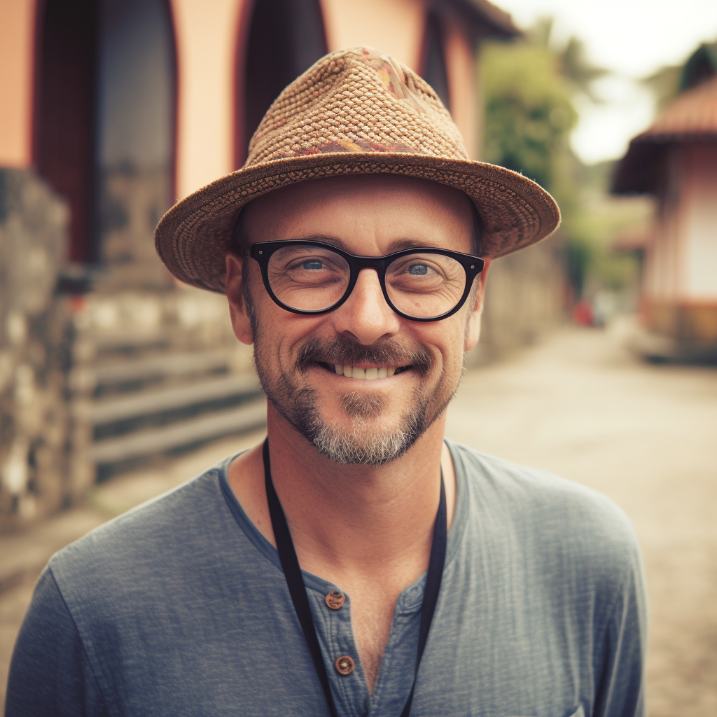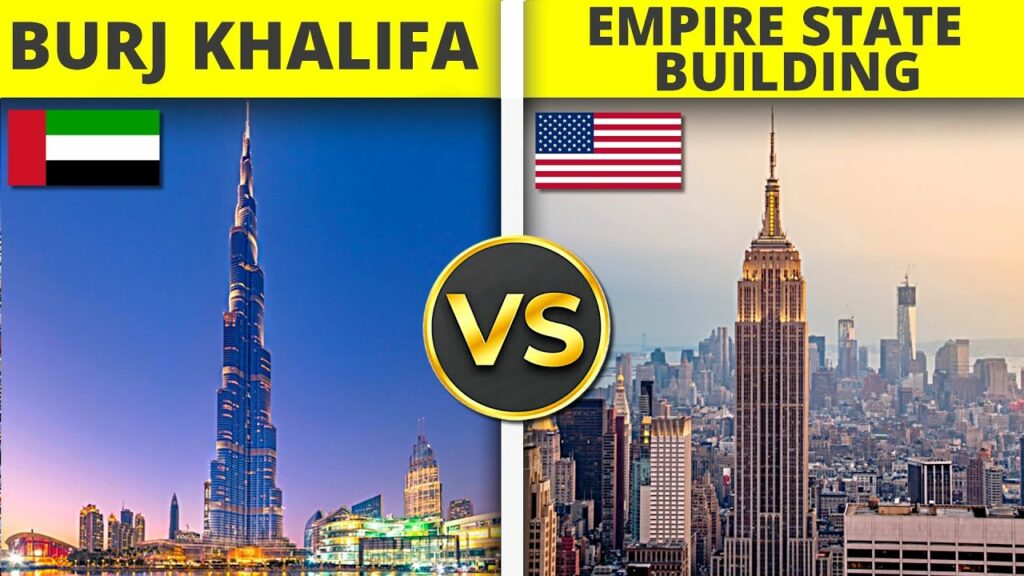As I was browsing through the internet, I stumbled upon an impressive structure that caught my attention. It’s a towering skyscraper located in Dubai – the Burj Khalifa. This iconic building has set records and made headlines around the world since its completion in 2010.
In this article, I will be sharing some interesting facts about this magnificent feat of engineering. The design inspiration behind the Burj Khalifa is fascinating. The architect, Adrian Smith, drew inspiration from Islamic architecture, which is evident in the intricate geometric patterns on the exterior of the building. The shape of the building resembles a desert flower called Hymenocallis, which gives it a unique and aesthetically pleasing appearance.
Additionally, Smith incorporated elements from various cultures to create a multicultural vibe that represents Dubai’s cosmopolitan nature. These details add to the overall beauty and grandeur of this architectural masterpiece.
Design Inspiration
You’ll be blown away by the sheer creativity and ingenuity that went into inspiring the design of this architectural marvel.
The Burj Khalifa is inspired by the Hymenocallis flower, which is native to the Middle East. This flower has delicate yet strong petals that curve outwards, giving it a unique shape that was incorporated into the building’s design.
The tower’s Y-shaped plan was also inspired by Islamic patterns found in traditional Arabic architecture. This shape not only adds to its iconic look but also serves a functional purpose as it allows for maximum views of the surrounding landscapes.
It’s clear that every detail was carefully thought out and executed in order to create one of the most awe-inspiring buildings in the world.
Moving onto the construction process, let me tell you how this incredible structure came to life.
Construction Process
When I was researching the construction process of the Burj Khalifa, two key points stood out to me: the use of high-strength concrete and the installation of the spire.
The high-strength concrete allowed for a taller building with less steel reinforcement needed. As for the spire, it was installed in sections and required careful planning to ensure it would be properly aligned and bolted into place.
These details may seem small, but they were crucial in creating a structure that could reach such incredible heights with stability and safety in mind.
Use of High-strength Concrete
The architects and builders of the Burj Khalifa relied heavily on high-strength concrete to ensure its stability and safety. This type of concrete has a compressive strength of around 10,000 psi, which is about five times higher than conventional concrete. By using this material, the builders were able to create a strong foundation that could bear the weight of the towering structure.
In addition to providing structural integrity, high-strength concrete also allowed for a more efficient building process. Its quick-drying properties meant that construction could move at a faster pace while still maintaining quality control. Without it, constructing such an enormous skyscraper would have been much more difficult.
With this material in place, however, the Burj Khalifa was able to rise impressively into the sky with ease. As we move on to discuss how they installed the spire atop this architectural marvel…
Installation of the Spire
Now, you’re about to witness the breathtaking moment when the spire was installed atop the tallest building in the world.
The installation of the spire on Burj Khalifa was a challenging task that required careful planning and execution. The spire itself weighed around 118 metric tons and measured over 200 feet tall. It was transported using specialized cranes and lifted into place by skilled construction workers.
The installation process took several days to complete due to safety concerns and weather conditions. However, with patience and precision, the team successfully placed the spire at the top of Burj Khalifa, marking a significant milestone in its construction.
This momentous occasion symbolized Dubai’s commitment to innovation, technology, and design excellence. With this accomplishment completed, it paved the way for Burj Khalifa to break yet another record: being recognized as the tallest freestanding structure in history without any supporting structures or wires holding it up!
Record-breaking Height
You’ll feel like a tiny speck as your eyes strain to take in the dizzying height of the Burj Khalifa. Standing at an incredible height of 828 meters, this iconic structure is a testament to human engineering and design prowess. It’s hard to fathom that just over a decade ago, this towering skyscraper was nothing but a mere idea.
The Burj Khalifa broke numerous records when it was completed in 2010, including being the tallest building in the world ever built by humans. The sheer magnitude of its height is mind-boggling. To put things into perspective, if you were to stack four Eiffel Towers on top of each other, they still wouldn’t reach the same height as the Burj Khalifa!
It’s no wonder why visitors from all over the world flock to Dubai just for a chance to marvel at this architectural wonder. As we move onto the next section about observation deck and lighting, you’ll see that there’s more to this building than meets the eye.
Observation Deck and Lighting
Now that we’ve discussed the Burj Khalifa’s record-breaking height, let’s move on to another impressive feature: its observation deck. Located on the 124th floor, the observation deck offers breathtaking views of Dubai and beyond. Visitors can see as far as Abu Dhabi on a clear day! The experience is truly unforgettable, and I highly recommend it to anyone visiting Dubai.
But the observation deck isn’t just for sightseeing. It also serves as a platform for stunning light shows that take place every evening. The tower is covered in over 11,000 LED fixtures that can be programmed to create incredible displays of color and movement. Whether you’re watching from below or up close on the observation deck, these light shows are an amazing spectacle to behold.
As we continue our exploration of the Burj Khalifa, it’s important to note that this awe-inspiring tower isn’t just about breaking records and wowing visitors with its beauty. In fact, sustainability efforts play a key role in its design and operation.
Let’s take a closer look at how this iconic structure is setting new standards for eco-friendly architecture…
Sustainability Efforts
As I researched the Burj Khalifa’s sustainability efforts, I was impressed by their energy-efficient design. The building was designed to reduce its energy consumption by using efficient cooling systems and LED lighting.
Additionally, renewable energy sources such as solar panels are used to power the building. The Burj Khalifa also has recycling and waste management programs in place to minimize their environmental impact.
They have a comprehensive waste segregation system that sorts recyclable materials from non-recyclables. Overall, it’s evident that the Burj Khalifa takes sustainability seriously and strives to be an environmentally responsible landmark.
Energy-efficient Design
You’re immersed in the awe-inspiring energy efficiency of the design, crafted with a meticulous attention to detail that’s as impressive as the tower itself.
The Burj Khalifa is designed to reduce its carbon footprint and energy consumption through innovative features such as high-performance glass, which helps to control solar heat gain and reduce air conditioning needs.
In addition, the tower has a central cooling system that uses water from an artificial lake surrounding it, reducing the amount of electricity needed for air conditioning.
But it’s not just about conserving energy – the Burj Khalifa also generates some of its own electricity through wind turbines located at the top of the tower.
These turbines can generate up to 1,500 kilowatt-hours per year, enough to power about 300 homes for one month.
This combination of conservation and generation makes the Burj Khalifa an excellent example of sustainable engineering.
As we move into discussing renewable energy sources, it’s worth noting how this incredible building serves as both a testament to human ingenuity and a reminder of our responsibility towards our planet.
Use of Renewable Energy Sources
Imagine being surrounded by the hum of wind turbines generating electricity at the top of a towering structure, showcasing how renewable energy sources can be utilized in modern engineering design. That’s exactly what you’ll experience at the Burj Khalifa.
The world’s tallest building uses various forms of renewable energy to meet its energy needs. The Burj Khalifa has 28,261 solar panels that generate over 3.5 million kilowatt-hours of clean energy annually. This is equivalent to powering approximately 300 homes for a year. Additionally, the building has three wind turbines located near the top that produce enough electricity to power all its external lighting requirements.
By using renewable energy sources, the Burj Khalifa not only reduces its carbon footprint but also sets an example for other buildings around the world on how they can harness clean energy to meet their power needs efficiently and effectively.
When it comes to sustainability practices, recycling and waste management programs are equally important as renewable energy sources in reducing a building’s environmental impact. Therefore, it’s worth noting that besides utilizing renewables, the Burj Khalifa also has an efficient waste management system in place that helps reduce landfill waste and promotes recycling through segregation of different types of waste materials such as glass, plastic, paper, and organic matter.
Recycling and Waste Management Programs
Now, let’s talk about another impressive initiative implemented in the Burj Khalifa – its recycling and waste management programs.
As someone who’s passionate about sustainability, I was impressed to learn that the building has a comprehensive program for managing its waste. The Burj Khalifa employs a range of measures to reduce waste production, including composting organic materials and implementing an extensive recycling program.
The building also uses state-of-the-art technology to sort and process its waste, which allows it to be recycled or reused whenever possible. Overall, these efforts have helped the Burj Khalifa significantly reduce its environmental impact while setting an example for other buildings around the world.
Conclusion
In conclusion, my visit to the Burj Khalifa was a truly mesmerizing experience. From the breathtaking view from the observation deck to learning about the sustainability efforts put in place during construction, there is no doubt that this building is one of a kind.
As I stood at the top of the world’s tallest building, I couldn’t help but remember the adage ‘sky’s the limit’. This phrase perfectly encapsulates what it means to be human – our innate desire to push boundaries and achieve greatness.
The attention to detail and meticulous planning that went into every aspect of this architectural masterpiece is evident in its design, construction process, and record-breaking height. The Burj Khalifa serves as a testament to human ingenuity and perseverance. It stands tall as a symbol of what we can achieve when we set our minds to something.
After visiting this incredible structure, I’m left with an overwhelming sense of awe and inspiration that will stay with me for years to come.

Meet Scott Robinson, a seasoned traveler with 28 countries under his belt, has immersed himself in diverse cultures around the world. His articles are a window into the rich tapestry of traditions, customs, and local flavors he has encountered on his globetrotting escapades. Scott’s deep appreciation for the beauty of cultural diversity shines through his writing, allowing you to embark on a virtual journey that celebrates the vibrant mosaic of humanity.



